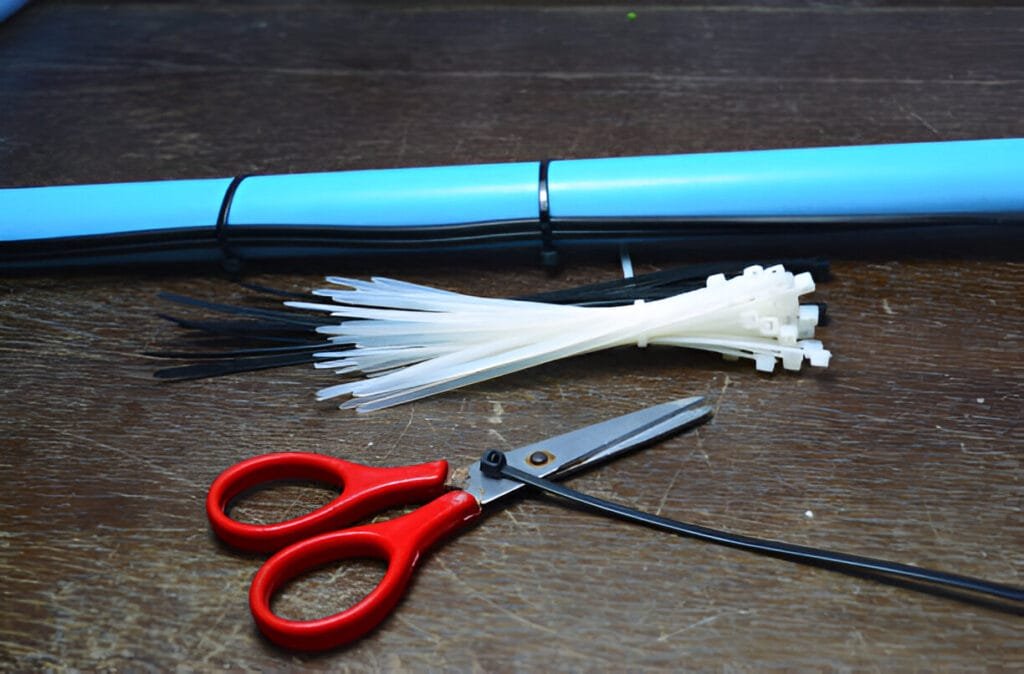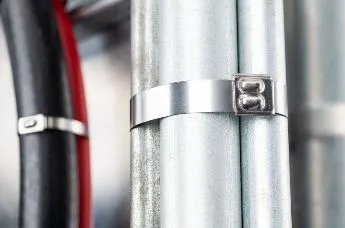Analysis of Colored Cable Ties: Material, Color Matching and Application
Colored cable ties have transcended their initial bundling purpose in industrial settings, evolving into a systematic visual management tool. They serve as safety warnings, quality tracking aids, and process organization tools. Their standardized color-coding system enhances operational efficiency, reduces errors, ensures safety, and meets industry standards. This article will delve into the comprehensive value of colored cable ties from three perspectives: material, color matching process, and application
Material Classification of Colored Cable Ties
Colored cable ties are primarily crafted from plastic materials like nylon 6, nylon 66, and PP. Nylon 6 ties are cost-effective and ideal for indoor use, while nylon 66 ties offer good rigidity, when combined with UV and heat-resistant additives, offer UV resistance and weatherproofing, making them suitable for outdoor use. PP-based ties are chemical-resistant but more expensive,suitable for industries such as electroplating and chemicals.. We also offer custom-made cable ties using special materials like PA11, PA12, PA46, PA66 (metal powder), and Teflon.
Color matching process for colored cable ties
The primary colors for cable ties are black and white. We also offer a range of colored cable ties in shades such as red, yellow, blue, green, pink, orange, purple, brown, gray, silver, and gold. For optimal color matching, we recommend sending a sample of the desired cable tie. Alternatively, you can use the Pantone color chart to select a color and we will produce a sample for your approval.You can select color samples from the Pantone website (https://www.pantone.com/hk/tc/color-finder) and send them to us. Please note that relying solely on photos for color selection may result in discrepancies.
Applications of colored cable ties
Colored cable ties are widely utilized for various purposes such as boxing and cabinet securing, as warning signs, for organizing fruits and vegetables, and for categorizing and managing goods.
Categorizing circuits: We utilize zip ties of different colors to differentiate power, signal, and ground lines. For instance, red ties denote fire-resistant lines, while blue ones represent neutral lines.
telecommunications base stations: fiber optic zip ties are classified based on color to denote their transmission direction or purpose. Blue zip ties represent uplink signals, orange zip ties represent downlink signals, and yellow zip ties represent redundant backup links. Distinguishing by signal type and network level: Single-mode fiber optic zip ties are identified by green zip ties, multi-mode by gray, dedicated control channels by purple, and encrypted transmission channels by black zip ties.
Power system classification: The power system is categorized with yellow zip ties for 110V and red zip ties for 220V, ensuring electrical safety.
Pipe and equipment identification: In chemical plants, purple zip ties are typically employed to distinguish chemical pipes, while green ones are used for cooling water systems to enhance safety. In the electrical industry, color-coded sensors are matched with specific types for quick identification, such as yellow cable zip ties for industrial robot safety circuits.
Data center management: We assign color-coded network layers or zip ties based on customer segmentation, such as blue for gigabit networks and yellow for 10G networks.
Temporary structure reinforcement and wedding theme arrangements: Black or green zip ties are typically employed to secure tents, billboards, and other structures at outdoor music festivals, ensuring they remain hidden yet secure. Gold or silver zip ties are often used for wedding floral arrangements or lighting, striking a balance between functionality and aesthetics.
Wire harness management:We offer a variety of harnesses for automotive repairs. Red wire harnesses are for modified harnesses, black for original harnesses, and blue for ship-specific harnesses to distinguish them from seawater systems.
Safety warnings and inspections: Orange zip ties are ideal for highlighting warning signs in maintenance zones or hazardous areas. Once items have passed safety checks, use green zip ties to indicate this, thus preventing duplicate inspections.
Plant support and bundling: To maintain color consistency and enhance aesthetic appeal, secure vines or artificial plants with green or brown zip ties. For better organization, use color-coded charging zip ties in research settings (e.g., red for smartphone chargers, blue for tablet chargers).
Emergency Markers: In disaster relief efforts, use red zip ties to mark priority areas and yellow zip ties to indicate cleared zones. For medical equipment, use color-coded zip ties to differentiate functions like oxygen and inhalation devices. Typically, white zip ties are used for oxygen tubing and yellow for inhalation tubing. For mixed gases, it’s suggested to use both white and gray zip ties simultaneously.
Our cable management system, utilizing a scientifically rigorous color-coding process, elevates colored cable ties into a powerful visual tool. It enhances efficiency, safety, and spatial order in various settings, from industrial equipment to daily living spaces. We offer standard color code management or flexible customization to suit your specific needs.





